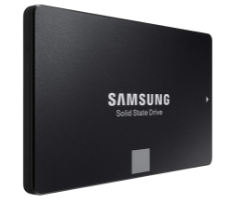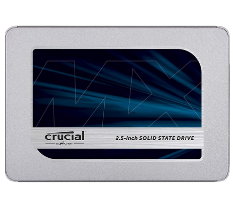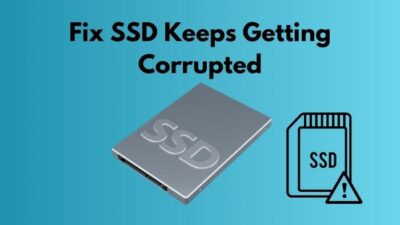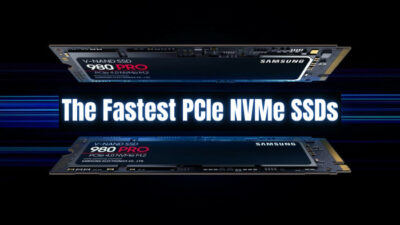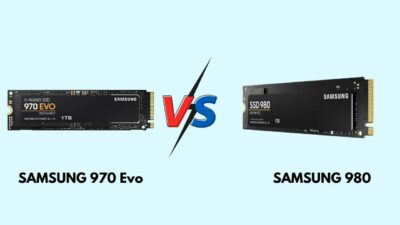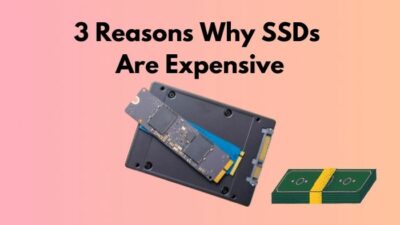When searching for options for updating your system’s storage, nothing is better than SSDs.
Solid State Drives, or SSDs, are the most desirable storage options these days. You’ll rarely find anyone who would prefer HDD over SSDs.That is because no one would choose something that offers average output.
If you highly value your gaming output, SSDs are the most trustworthy option. That said, among a plethora of SSDs in the market, the Crucial MX500 offers excellent value to any gaming build.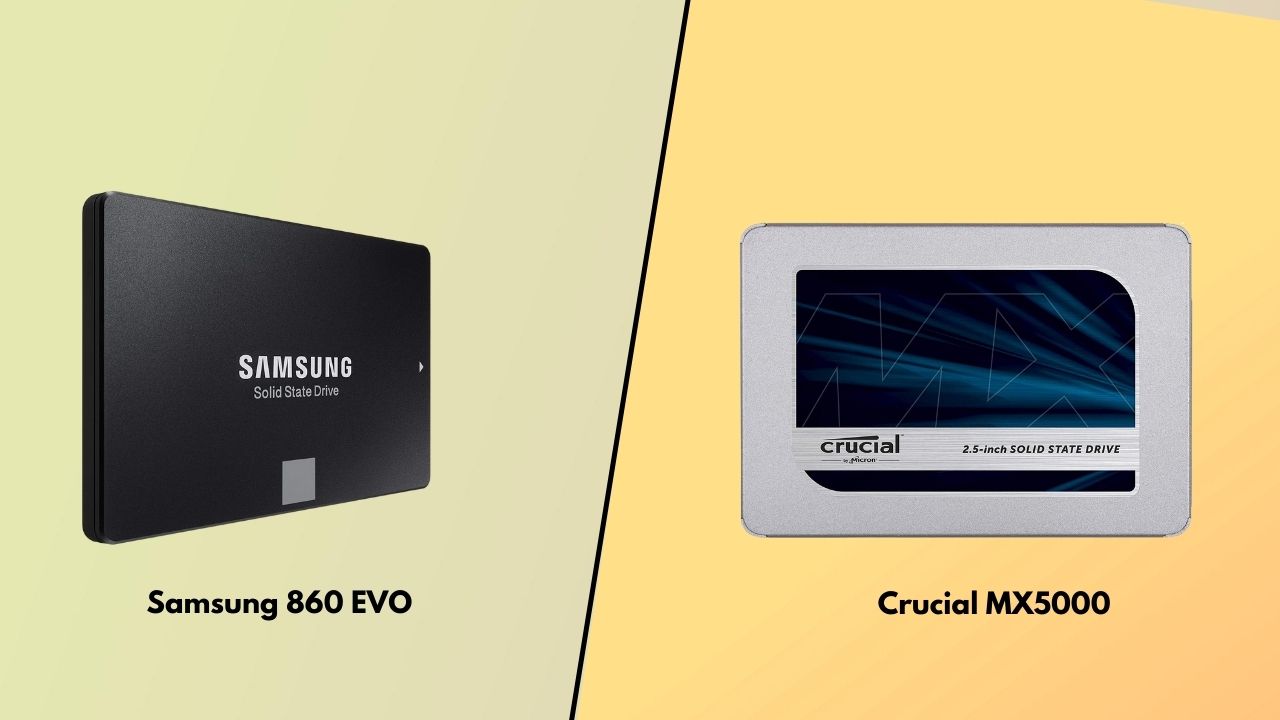
However, is it worth it over the Samsung 860 Evo?
Both the Crucial MX500 and Samsung 860 Evo are the finest SATA III SSDs and offer quality with performance.
But between them, there has to be a sure winner. To find it out, let’s dive into the article.
Sequential Read and Write Speeds
Sequential read and write speeds are among the core features of any SSD. Generally, both the read and write speeds refer to how quickly data is written or read from the drive sequentially.
In contrast, random read or write speed doesn’t have any sequence. Data is scattered, and the whole process is kind of inconsistent.
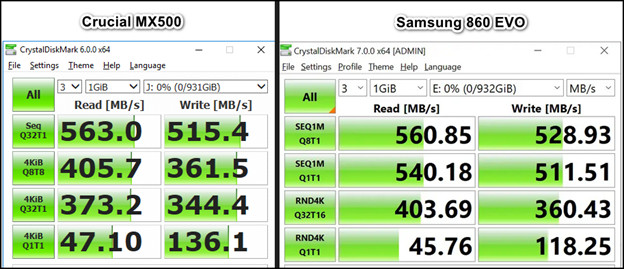
The read and write speed matters as it is one of the essential determinants of an SSD’s performance. The optimum speeds for the SATA III SSDs are around 560 MB/s and 510 MB/s, respectively. With their amazing read and write capability, the SSD can reduce high disk usage and smoothen the performance.
As we are talking about Crucial MX500, it has a read speed of 560 MB/s and a write speed of 510 MB/s. In the Samsung 860 Evo, the read speed is 550 MB/s, and the write speed is a tad higher, which is 520 MB/s.
In our tested results, the read speed in both SSDs is quite similar. But in the write speed, Samsung 860 Evo has shown its capabilities.
On the other hand, the random read/write speeds for both these SSDs are pretty close. The random read is 95000 IOPS for the model from Crucial, whereas it is 97000 IOPS for Samsung.
Similarly, the random write for Crucial is 90000 IOPS, and for Samsung, it is 88000 IOPS.
See how close they are. And due to this, no average gamer would feel the differences between these two models.
But if we need to talk about the winner here, I would pick the Samsung 860 Evo over the Crucial MX500.
Capacity
Anything that you should consider first while buying an SSD is its capacity. You must be wise when choosing an SSD of a particular capacity, as different needs require SSDs of different capacities.
Let’s say you’re a gaming freak and love to store games in your system so that you can play those later. In that case, you need an SSD with a capacity of no less than 500 GB.
The reason is simple. Games usually have a size ranging from 40 to 70 GB, and often they require some extra patches. When you have an SSD with a size of 512 GB or 1 TB, it gets easy to store multiple games and other operating files.
If you are into photo and video editing, you must need an SSD with a large capacity because graphics design applications and files consume a lot of space. You need to have backup files and other project files, which eventually results in enormous space consumption. That is why you need an SSD with at least a size of 1 TB for such functions.
As for both these models, they come with multiple capacities. The Crucial MX500 has options with capacities like 250 GB, 500 GB,1TB, and 2 TB. Quite diverse, isn’t it?
You have multiple options for different functions. You can choose the 250 GB or 500 GB one for casual functions. Or, if you are a video editor, there are 1 TB and 2 TB versions.
However, the Samsung 860 Evo has an edge here as it also comes with a 4 TB version, which you can use in enthusiast-class builds.
In my opinion, 500 GB or 1 TB of both these SSDs are very good for gaming. But if you seek something extreme in an enthusiast-grade build, you better go with the 2 TB or 4 TB version of the Samsung 860 Evo.
So, the Samsung 860 Evo got a slight advantage in the maximum capacity section of its extensive storage options.
Form Factor
When selecting a specific SSD, you must choose a better form factor with your build.
If the SSD doesn’t fit into the chassis, all your money buying it would be a waste. Also, having explicit knowledge of the form factor of your required SSD would give you an idea about how SSDs you can fit.
Now, the Crucial MX500 and the Samsung 860 Evo come with a 2.5 form factor and the M.2 ’gum stick’ type.
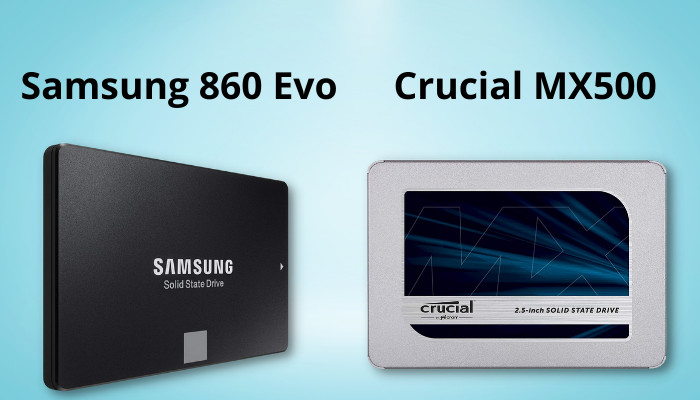
However, the Samsung 860 Evo offers another version that comes with an mSATA design. This mSATA SSD is relatively smaller than other standard SSDs, making it a handy option for builds with smaller spaces.
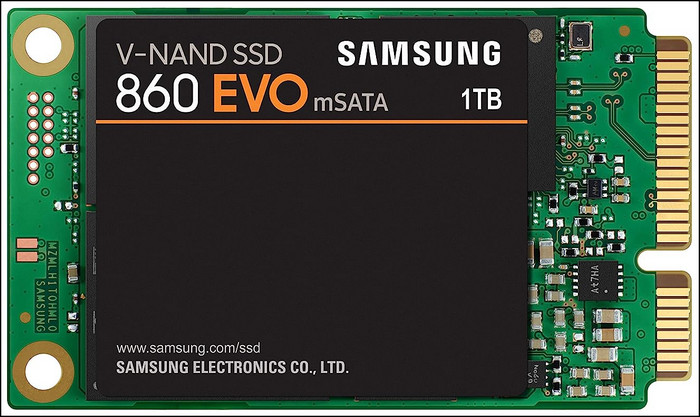
Therefore, the Samsung 860 Evo is more versatile than the Crucial MX500. As under its belt, it has standard SSDs along with mSATA options that work in relatively smaller builds.
Endurance
For any PC component, long-lastingness is a crucial factor. Most gamers who aim to build a rig that will last long require durable components and a higher warranty.
That said, for SSDs, endurance is more important than its warranty.
Now, the question is, what does SSD endurance mean?
Let me break this down. The total amount of data that an SSD will be able to write under its given warranty is the endurance of that SSD. This endurance is also expressed as TBW.
To be honest, choosing the right SSD isn’t an easy process. It requires many aspects to focus on, and the endurance level of an SSD certainly belongs at the top of the list.
SSDs wear out after a certain period. It happens after the continuous writing of data for an extended period.
You won’t definitely want to buy an option that doesn’t turn out to be feasible. Ultimately, the money matters, and overpaying for something that won’t deliver doesn’t make any sense.
Now, you should keep in mind that the larger the capacity, the higher the endurance. Between these two models, the 860 Evo has the edge over the MX500.
The 860 Evo has an endurance of at least 150 TBW on its 250 GB version. The best part is that its 4 TB version sports a staggering endurance of 2400 TBW.
| Capacity | Crucial MX500 (TBW) | Samsung 860 Evo (TBW) |
|---|---|---|
| 250GB | 100 | 150 |
| 500GB | 180 | 300 |
| 1TB | 360 | 600 |
| 2TB | 700 | 1200 |
| 4TB | - | 2400 |
In contrast, the minimum endurance in MX500 is 100 TBW in the 250 GB model. The max endurance is present on the 2 TB version, which is 700 TBW.
Therefore, despite having similar warranties, Samsung 860 Evo is a clear winner over MX500 for endurance.
Software
The way you would control the SSD would impact its overall productivity. And that is where the software with which you can control the SSD comes into play.
The software that the manufacturers provide has a significant role in dictating the SSD output.
It consists of an interface that perfectly uses the drive to its potential.
The 860 Evo has Samsung Magician software that comes with a very user-friendly interface. It just eases your job to a great extent.
It consists of a variety of features that helps you to keep proper track of your storage. Also, it enables access to the sequential write/read speeds and monitors the temperature.
Besides, you’ll also like the way it gives you updates about new firmware. In my opinion, the best part about this software is the 256-bit hardware encryption that saves your storage from theft or hacking.
Compared to the 860 Evo, the Crucial MX500 uses the Crucial’s storage executive. This software does every other common function that is available.
You can view the storage stats as well as look for new updates. The best part is that this software includes cache features, which significantly speed up the SSD function.
Pricing
The price becomes a huge factor when you are about to make the final decision. Since both these models come with different versions, prices are different.
However, the Samsung 860 Evo price is around double in every instance.
That is why Crucial has the most affordable SSD to offer, which is its 250 GB version. On the contrary, the 4 TB version of the 860 Evo is the most expensive one.
Which Should You Buy?
Both the Crucial MX500 and the Samsung 860 Evo are popular solid-state drives (SSDs) that offer reliable performance and durability. But when choosing a specific one, you should consider some factors.
The first thing you should check is its read and write speed in the actual test because it’s the main thing that matters. After that, there comes capacity, endurance, and budget.
Based on every factor and extensive tests, we came to a final result and presented the winners below.
Editors Choice: Samsung 860 Evo
Samsung makes some of the finest SSDs in the market. Through the 860 Evo, Samsung maintains that reputation. This TLC-based SATA III is an upgraded version of the 850 Evo, and it beats every competition to be one of the leading choices of gamers.
And that is because it delivers exactly what it promises and is probably one of the fastest SATA SSDs you can add to your system.
- »It offers various storage capacities to choose from.
- »Excellent sequential read and write speed.
- »Great endurance capabilities.
- »Reliable manufacturer.
- »Expensive compared to other SATA SSDs.
The Samsung 860 Evo might be labeled as expensive, but its top-notch features and high endurance make it worth every penny.
Alternate Choice: Crucial MX500
The Crucial MX500 might not cope with Samsung in performance, but it provides a very intriguing price which allows it to give head-to-head competition with the 860 Evo.
The price is very affordable, which makes it perfect for low and mid-end budget PCs. It delivers decent performance and is one of the most highly rated on the market.
- »Very affordable price.
- »It offers 250 GB, 500GB, 1 TB, and 2 TB versions.
- »Lower sequential read/write speed than 860 Evo.
- »Endurance isn’t top-notch.
Despite being an alternate choice, Crucial MX500 performs well and is hardly distinguishable in games and multitasking without a test. It makes the SSD perfect for a value-for-money choice and budget build.
FAQ
Which is better, the Samsung 860 Evo or MX500?
The 860 Evo is better if you take various aspects into account. It has more versions and greater endurance, which are the prominent factors for choosing an SSD.
Is the Crucial MX500 worth it?
The Crucial MX500 offers good features along with diverse capacities. The best part is that this SSD is priced affordably, which eventually makes it worth every penny.
What are the advantages of an mSATA SSD?
mSATA SSDs aren’t that advantageous when it comes to features or performance. But when it is about effective pricing and smaller builds, these SSDs are viable options.

